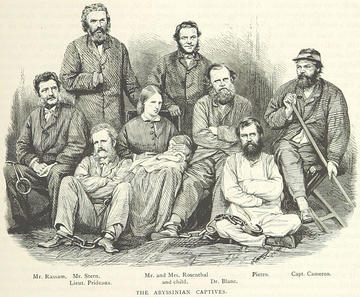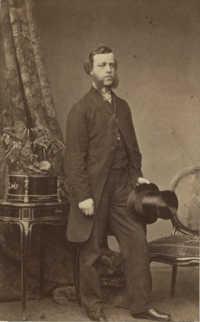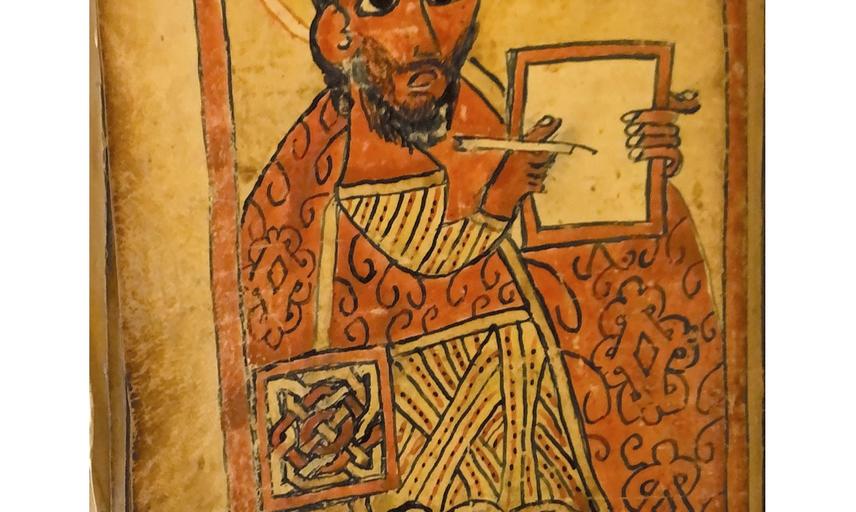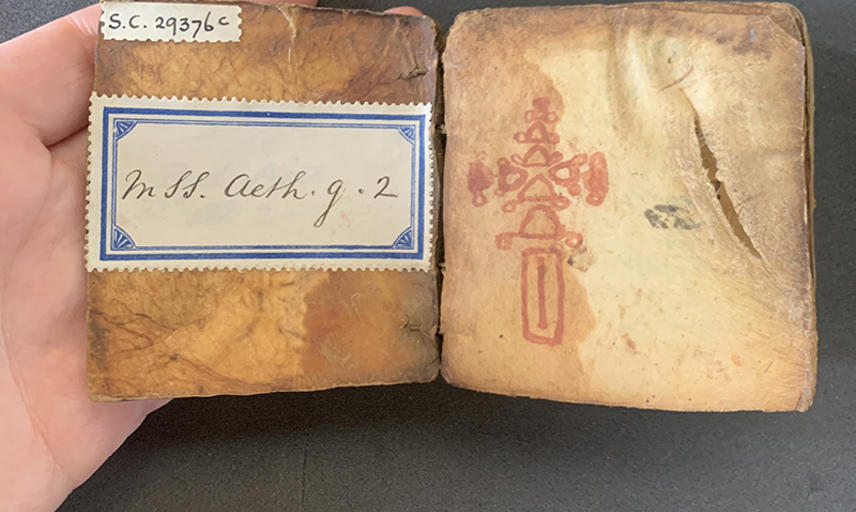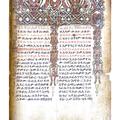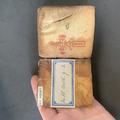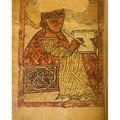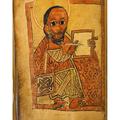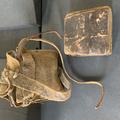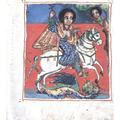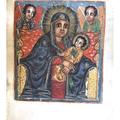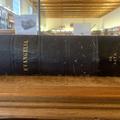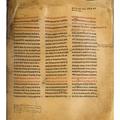The Legacy of Maqdala 1868 at the Bodleian Library
In 1867, the British Government began to prepare for a military expedition to Abyssinia (now Ethiopia) in order to launch a campaign against Emperor Tewodros.
The Emperor, who ruled from 1855 to 1868, had earlier requested assistance from Britain in modernizing his kingdom and protecting its borders from Egyptian encroachment in the north. When this request went unacknowledged, the Emperor, assuming malicious intent, retaliated by imprisoning the British Consul to Abyssinia, Duncan Cameron, along with a small group of other Europeans who he felt had disrespected or displeased him in some manner. Among this group were servants and assistants to Consul Cameron, several missionaries, two natural history collectors, and eventually Mr. Hormuzd Rassam, who had been sent from London on a special mission to appease the Emperor and secure the release of the other captives.
When it became apparent that the Emperor would not willingly release the hostages, the British Government decided that it was necessary to dispatch troops to Abyssinia in order to force his hand. Correspondence throughout the preparations to address this so-called “Abyssinian difficulty” repeatedly emphasized that the purpose of the expedition was to punish and depose Emperor Tewodros, and that doing so would supposedly have popular support within Ethiopia. Colonel William Merewether, a British Indian Army officer who served in Abyssinia and on the Abyssinian expedition, expressed his confidence that, given the assurance that the British forces would depart Ethiopia upon accomplishing this goal and leave it to self-govern, the country would in fact welcome the expedition. Further reports on this matter from the Foreign Office expanded on this narrative, reaffirming that the sole aim of this mission was to punish the Emperor for his conduct and release the captives, that private property and rights would be respected, and that the army would subsequently withdraw and hand over the country to legitimate rulers.
To this end, in 1868 no less than 13,000 troops were deployed to the mountain fortress and treasury at Maqdala under the leadership of Sir Robert Napier. With the aid of vastly superior firepower, the British troops quickly overwhelmed the Ethiopian forces to secure a swift and decisive victory. In recognition of his defeat, Emperor Tewodros released the European hostages, however, unwilling to surrender himself to the British, he chose instead to commit suicide with a pistol that had been a gift from Queen Victoria.
Despite having already achieved their stated goal, rather than immediately withdrawing from Maqdala the British forces proceeded to plunder the mountain fortress, its church the Madhane Alam, and its treasury. They looted a huge amount of Ethiopian treasures, including hundreds of manuscripts, royal jewelry, crowns, crosses and other religious artifacts, before burning it to the ground.
Because of the presence of Richard Holmes, an assistant in the British Museum’s Department of Manuscripts who had been appointed an archaeologist of the expedition, over 300 manuscripts were acquired on the spot by the British Museum. The rest of the loot was collected and sold at a two-day auction in order to raise funds for the expedition, with artifacts ultimately being dispersed throughout private collections and public institutions across the United Kingdom and Europe in the years that followed. In addition to the 300 manuscripts that were originally sent to the British Museum (many of which are now housed in the British Library), a large selection of textual materials made their way into the collections of prestigious libraries such as those at Oxford and Cambridge. The majority of these materials are religious in nature, including many Bibles, theological treatises, and writings on saints, and many of them are elaborately and beautifully illustrated, which makes them significant to the study of Ethiopian art, history, religion, and culture.
Until now, studies of the Ethiopian manuscripts in the Bodleian library have primarily focused on their cultural, religious, and artistic values with relatively little attention paid to the varying circumstances of their acquisition. However, the Maqdala treasures as a collective have been situated within a series of debates on cultural restitution ever since they were first brought back to England by members of the Abyssinia Expedition.
As early as 1871, Prime Minister William Gladstone made an address to parliament during a meeting on the accession of an Ethiopian crown and chalice into the collection of the British Museum in which he expressed deep regret that these artifacts had ever been brought to England in the first place. Mr. Gladstone affirmed that the conflict had been between England and Emperor Tewodros – not between England and the peoples and churches of Ethiopia. Thus, he lamented that significant and sacred objects had been removed from the context in which they were the most valued and brought unnecessarily to England. While he acknowledged that the trustees of the British Museum were doing their duty by assessing an application made to them, he entirely disagreed with both their conclusion that the objects in question should be accessioned and their presumption that Richard Holmes had held the right to “secure” these objects on behalf of the museum. He also cited a letter from Robert Napier himself on the matter, in which Sir Napier had suggested that the objects should not be accessioned into the museum but rather held safely until such time as they could be returned to Abyssinia. As Mr. Gladstone notes in his remarks, this position calls into further question not only whether the museum should acquire the collection, but also whether these objects should have ever been taken from Ethiopia. Though the British Museum did ultimately succeed in accessioning Ethiopian artifacts from Maqdala, many of which are still in its possession, this early debate shows that the acquisition of treasures from this expedition has never been entirely without contestation.
With the rise of popular engagement with the subject of cultural restitution over the past two decades, skeptics have frequently attempted to dismiss calls for the repatriation of stolen objects as the retroactive application of modern principles of justice to historic events. To put it simply, they claim that accepting such requests would wrongly punish museums for crimes they did not commit – for crimes that were not even yet defined as criminal at the time of their occurrence. This is the position, for example, that Tiffany Jenkins (2016) takes in Keeping Their Marbles. She argues that “things were different in the past. Actions and deeds were permitted and approved of then that would not be now. Looking back is a privileged and elevated position from which to view the past, and it is one that is often distorted by current preoccupations…we should judge the past on the terms of the past, rather than by what we feel is right today” (Jenkins 2016: 122). However, as the disagreement between William Gladstone and the British Museum with regards to the Maqdala treasures shows, just as there is a lack of consensus now on the justness of restitution, so too has there been historical complexity and ambiguity on these same questions. The disputed reception of artifacts that were looted from Maqdala stands in distinct contrast to the triumphant display of the Benin treasures 30 years later following the infamously brutal sacking of the Kingdom of Benin in 1897. In The Brutish Museums, Dan Hicks (2020) argues that the exhibition of the Benin Bronzes in museums around the world constitutes both a spatial and a temporal extension of the violence of the original expedition; using artifacts that were violently stolen to tell the history of empire is thus a violent act in itself, no matter how self-reflexive or self-critical museums attempt to be. Despite the similarities between the contexts in which the Maqdala and Benin treasures were taken (punitive expeditions against African rulers), the points at which these cases diverge highlight not only the inherent complexity of cultural restitution, but also the fact that the impact of the British Empire on the African continent was never homogenous. By extension, unpacking the University of Oxford’s web of relationships to empire and to Africa requires attention to the nuances and details of different cases of violence, encounters, and theft. Just as the Pitt-Rivers Museum’s collection of Benin Bronzes informs our understanding of the 1897 expedition, we can add to our knowledge of these relationships by considering what we learn from the Bodleian Library’s collection of Ethiopian manuscripts that were taken from Maqdala in 1868.
In his essay ‘Of other spaces,’ Michel Foucault (1984) describes both museums and libraries as “heterotopias of indefinitely accumulating time,” which are places in which “all the other real sites that can be found within the culture are simultaneously represented, contested, and inverted” (p.24). He claims that these spaces are specific to and characteristic of 19th century Western culture (Foucault 1984). There has been much critical scholarship on museums as powerful tools that must be subject to scrutiny rather than accepted as neutral indicators of progress and culture, particularly as it relates to their roles in perpetuating racist colonial ideologies and practices (see Price 2007; Bennett 2009; Van Broekhoven 2018; Hicks 2020). Consequently, museums have been increasingly faced with the demand to account for and address the problematic histories that are embedded not only in their collections, but also in their institutional identities. Libraries, however, have gone largely unnoticed in these debates and have often escaped similar scrutiny. Unlike museums, which have been described as monuments to colonialism due to their display of artifacts looted by European colonial powers, libraries have not faced comparable condemnation for their holdings. In addition, museums like the Natural History/Pitt Rivers Museum in Oxford are often the physical sites of anti-colonial activism – the Oxford and Empire walking tour hosted by the organization “Uncomfortable Oxford” starts outside of the museum’s entrance and discusses its colonial origins. But when it comes to the uncomfortable history of the Bodleian Library, the conversation is generally focused on the content of its materials (such as maps showing antiquated ways of viewing the world) or on discriminatory publishing practices (what voices and identities have been systematically excluded), rather than on the various ways it has accumulated its vast collection of texts. For the purposes of the cultural restitution debate, is there a qualitative difference between a cloth inscribed with magical symbols from the tent of Emperor Tewodros that is currently held by the Pitt Rivers Museum and the manuscripts and magic scrolls that were taken from Maqdala that are currently held by the Bodleian Library? The Catalogue of Ethiopian Manuscripts in the Bodleian Library by Edward Ullendorff (1951) describes 66 Ethiopian manuscripts that were acquired post-1948. These texts are primarily comprised of writings on the lives of saints, prayers, service books, hymns, magical scrolls, and Bible fragments – that is, they are mainly religious and spiritual materials.
Click on the thumbnail images below to see them in their original size and find out more about these artefacts from the collection.
Ullendorff (1951) writes in the preface to the catalogue that it is “safe to assume that the majority of the MSS here described were acquired in Ethiopia by individual members of Napier’s expedition in 1867/68. After the death of their owners many found their way to auction sales and were then purchased by the Bodleian Library.” Of these 66, there are eleven that are explicitly and definitively linked to Maqdala, all either purchased or donated in the decades following the expedition. From this information we can reasonably infer that none of the Ethiopian manuscripts in the Bodleian Library’s collection were acquired directly from the expedition in the way that Richard Holmes was able to secure an assortment of manuscripts on behalf of the British Museum. Instead, it is likely that the texts in the Bodleian’s collection were first held in private collections throughout the United Kingdom. However, these circumstances of acquisition are not dissimilar from the ways that many objects make their way into museums: by auction or by donation. Furthermore, however they may have come to the Bodleian Library, since their acquisition none of these manuscripts have been on display as part of an exhibition. The Weston Library of the Bodleian system, which is responsible for rare books and manuscripts, put on an exhibition of Ethiopic manuscripts from July – October 2019 as part of the Ethiopian and Eritrean Co-curation Project, however this exhibition focused on a later set of manuscripts that were not linked to Maqdala. Still, it is not at all uncommon for objects in museums to be left off display – what audiences see in a museum is really the tip of the iceberg of the museum’s total holdings, and museums themselves often aren’t even completely aware of every item in their possession. It therefore seems that it is not necessarily only the methods of acquisition or the processes of display that have directed the attention of cultural restitution debates towards museums rather than libraries. It’s not because libraries are exempt from restitution claims, as Oxford University guidelines on the return of cultural objects state that they govern both libraries and gardens in addition to museums. In practice, however, it is not the case that the Bodleian has been equally affected by these policies. So, why is it then that the Pitt Rivers Museum has frequently had to engage openly with the issue of restitution while the Bodleian Library sits down the road largely undisturbed?
One possible answer to this question has to do with accessibility.
Museums on a whole are institutions that are open to the public – many of them offer free admission and operate on an audience-facing mentality. It is indisputable that museums function to disseminate knowledge through material heritage and culture, regardless of whether we consider this knowledge to be positive or negative. Thus, their raison d’être is inextricably linked to actively making it known what they have in their collections, even if they aren’t able to publicize every single item equally. Libraries, however, like archives, are much more elusive institutions when it comes to finding out what they contain, and depending on the nature of the particular library there are often restrictions on who can access this information. This is especially the case with private libraries such as those at universities. To access the Bodleian library’s collection requires either being a member of Oxford University or holding a reader card; to apply for a reader card, one generally has to demonstrate a research need and be affiliated with an institution. Once past that hurdle, to know what Ethiopian manuscripts are held by the Bodleian it is necessary to consult the physical catalogues in the David Reading Room of the Weston Library in Oxford, which are not digitized. If one actually wants to access and view the manuscripts themselves, they must apply for an unrestricted card, which must be approved by the special collections staff based on research qualifications. Given these barriers, it would be quite difficult for most people who are interested in pursuing cultural restitution to actually find out what the Bodleian Library has in its holdings that might be subject to this process. By contrast, even though they are certainly not entirely transparent about their collections, museums present relatively easy targets for cultural restitution. The difference in accessibility may not completely explain the disparity in the attention given to museums and libraries, but I would argue that it should be taken seriously into consideration. Consequently, efforts must be made to further explore the provenance of library collections with an aim towards openly acknowledging and addressing their diverse and potentially problematic histories so that they can be incorporated more actively in these conversations.
Expanding the scope of cultural restitution beyond museums is a necessary step in more fully reckoning with Oxford’s, and, more broadly, England’s, colonial histories.
Despite having not itself been subject to colonialism in an official sense, some scholars such as Donald Crummey (2003) have argued that Ethiopia’s approach to history and heritage has nevertheless been shaped by both colonial and postcolonial systems. In particular, he claims that the European incursion into Africa that ultimately resulted in the establishment of the modern, bordered nation-state had a profound impact on Ethiopian concepts of nationhood. In this way, the legacies of European colonialism and global imperialism have still been felt in contemporary Ethiopia, however Ethiopia’s negotiation of its history and national identity in the period of African decolonization have taken different forms from those found in former colonies. Namely, Ethiopian historiography has constructed an image of modern Ethiopia based on an exceptional past dating back to biblical times; the fact that Ethiopia resisted colonial rule during the period of African colonization reinforces the sense of exceptionalism. Emperor Tewodros’s suicide in the face of the storming of Maqdala is therefore seen as a symbol of Ethiopian resistance to being dominated by Europeans. The call to repatriate the stolen Maqdala treasures in this framework can be read not as a desire to restore a lost dignity or independence but rather as an investment in visualizing this history for the purposes of consolidating the modernity that is promised by this narrative of greatness. What this case shows us, illustrated by the story of the Maqdala manuscripts in the Bodleian library, is that the historical and contemporary issues of cultural restitution are not “one size fits all” when it comes to the relationship between Oxford and colonialism/imperialism. The fact that Ethiopia was not colonized by the British does not preclude its inclusion in these debates, nor does it mean that imbalances of power are not just as present. The effects of empire have been felt throughout Europe and Africa in a myriad of different ways, and we must make room for this complexity and heterogeneity as we negotiate this history. The University of Oxford may not have been involved in the sacking of Maqdala, but it is accountable to the ways in which it has benefited from and legitimized the violence of that expedition through its acquisition and uncritical retention of sacred texts in the Bodleian Library.
It is not enough for the University to simply include libraries in its guidelines on the restitution of cultural objects.
Like museums are increasingly required to do, measures should be put in place to encourage university libraries to research and publicly publish on the provenance of their collections. So long as the spotlight is on museums like the Pitt Rivers, libraries like the Bodleian will continue to function as hidden archives of the imperial violence that took place on the African continent during the 19th and 20th centuries. Delving more deeply into the histories of these library collections can expand our understanding of the nature of this violence, as well as of the various ways it has impacted African societies and Euro-African relations in the decades since. The Bodleian library describes its collection of Ethiopian manuscripts as one of the most prestigious in Europe, yet it makes no mention of the fact that it owes this collection to looting and destruction. We cannot assume that the absence of colonial rule equates to a lack of responsibility to repair such historical wrongs, which have had far-reaching consequences. While the Ethiopian and Eritrean Co-curation Project is a positive collaboration between the University and diaspora communities in the U.K., it does not disrupt the problematic dynamic that the Bodleian perpetuates by continuing to function as a gatekeeper to source communities’ own knowledge, histories, and culture – communities that increasingly include immigrant diasporas around the world. That is, there is an ongoing, colonial-reminiscent inequality between the Bodleian Library and the Ethiopian and Eritrean communities that it collaborates with because the Bodleian still has full control over what manuscripts and information they make available. Working towards increasing source communities’ access to Bodleian collections should be only one part of a larger process of addressing the legacies of injustice that stem from European imperialism. This process must include open engagement with the possibility that the ownership of texts in their collection may be contested, and making the necessary resources more widely available so that restitution, in whatever form this may take, can move forward.

Sabrina is a DPhil candidate in social anthropology focusing on museum collections with histories of contested ownership and debates surrounding their restitution. Her current work explores the social and political significance of Ethiopian material culture that was taken during a British military expedition in 1868. Her research interests include museum diplomacy, decolonization, military looting, and the relationship between heritage and development.


![Tewodros II, around 1860. [Wikipedia public domain] Painting of Emperor Tewodros II from Wikipedia public domain](https://www.anthro.ox.ac.uk/sites/default/files/styles/mt_image_medium/public/anthro/images/media/tewodros_ii_-_2.jpg?itok=LrKhSc3B)
